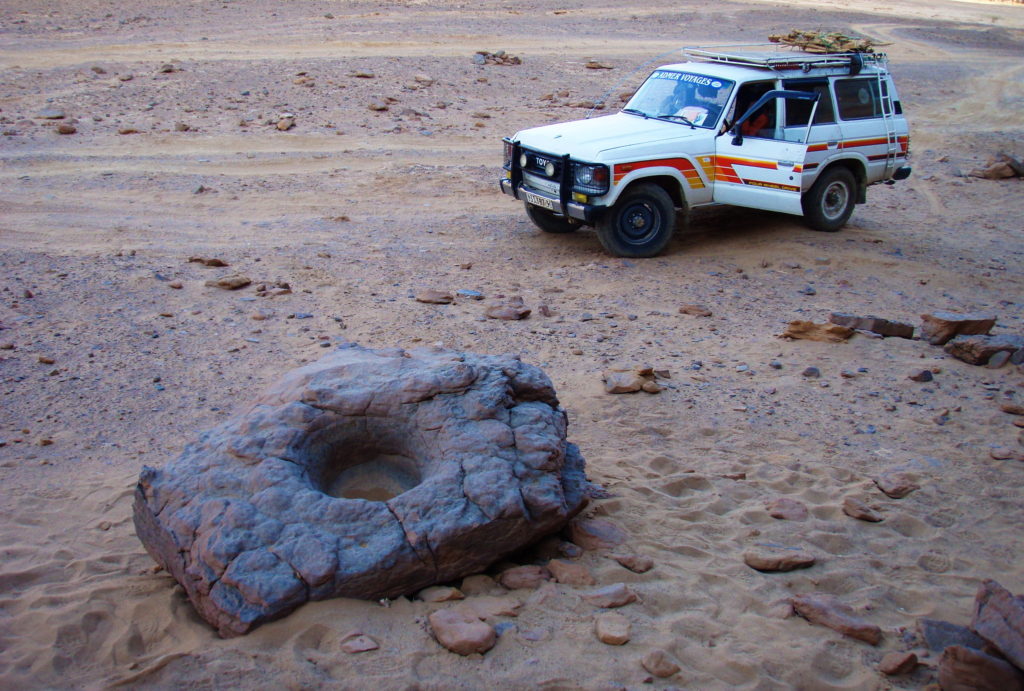Kettles and cupules

In Djaren, Algerian Tadrart
Kettles and cupules are man-made depressions abundantly present in the Central Sahara. The term “kettle” is used for oval or circular holes picked and ground in a horizontal rock surface. They are of various dimensions and depth and they occur in a variety of environmental contexts; inside or outside rock shelters, deepened in the floor or on boulders inside shelters, or on isolated stone blocks in the open. They appear both singularly or a number of them accumulated side by side. If grouped, oval and circular shapes may coexist on the same surface or it may be that only one kind of shape is present.
Cupules are shallow small holes, usually just a few centimetres in diameter. They are deepened in on either horizontal or vertical surfaces, often present on isolated boulders inside rock shelters. They appear singularly as well as in numerous accumulations, often numbering dozens at a single site. They are frequently associated with kettles and their dimensions vary not only between sites but also within a single site, as is also the case for kettles.
In the Algerian Tadrart and the Acacus, kettles and cupules often occur in shelters decorated with Round Head paintings which may indicate a relationship. However, they also appear with other forms of rock art as well as occurring in isolation.
Not only the period but also the function of kettles and cupules is difficult to determine. Some kettles are large enough to contain several litres of liquids and they are apparently made in relation to a water course, such as a waterfall within a rock shelter. Other kettles, even though also related to water, are too shallow to contain anything inside them, so that the practical function is rather to be excluded. The same is valid for cupules which, if they are in vertical position, could only hold a minimum quantity of material.
Besides kettles and cupules, other forms of stone-peckings exist in the Central Sahara, namely grooves. They are extremely simple indentations in the rock usually about 15-20 cm long and often grouped side by side. They are particularly abundant in the Algerian Tadrart where in some cases such as at Abri Freulon they are superimposed by Round Head paintings, indicating the relative chronology.
Bibliography (selection):
Bednarik, R. G. (2008) Cupules, Rock Art Research 2008 25 (1): 61 – 100.
Mori, F. (2000) Le grandi civiltà del Sahara antico (Torino: Bollati Boringhieri editore).
Soukopova, J. (2017) Central Saharan Rock Art: Considering the Kettles and Cupules, Journal of Arid Environment 143:10-14.
Tauveron, M. (1999) Planchers rocheux aménagés du Sahara central, L´Anthropologie 103, n.3, 391-419.